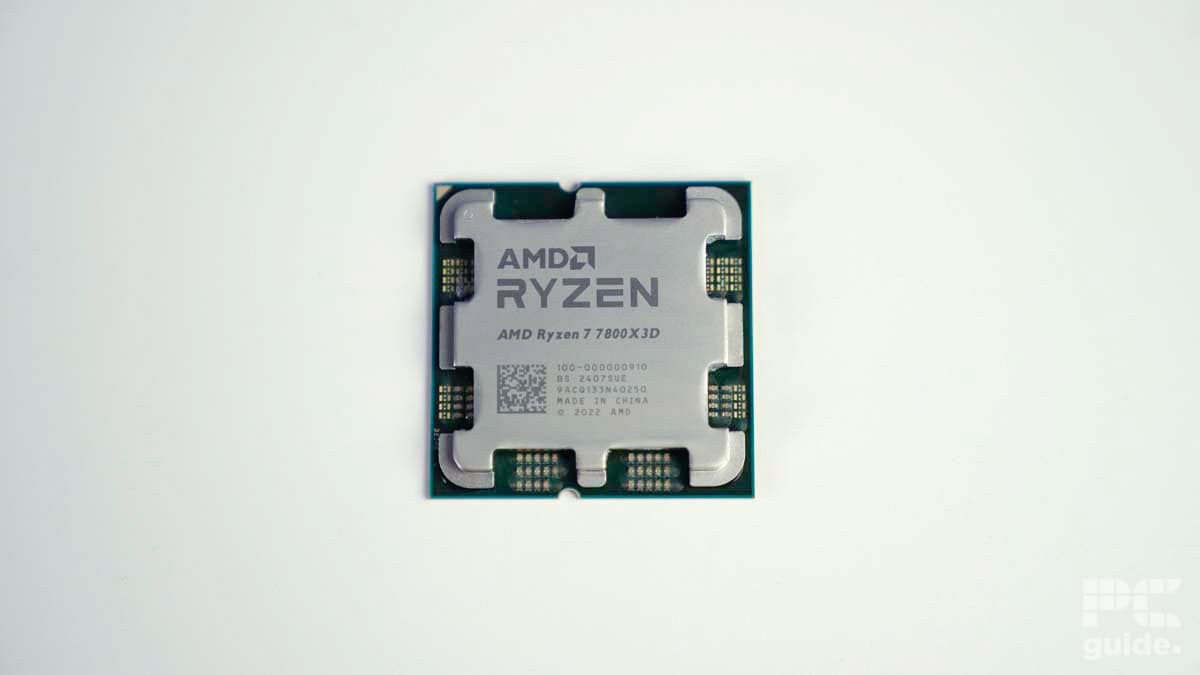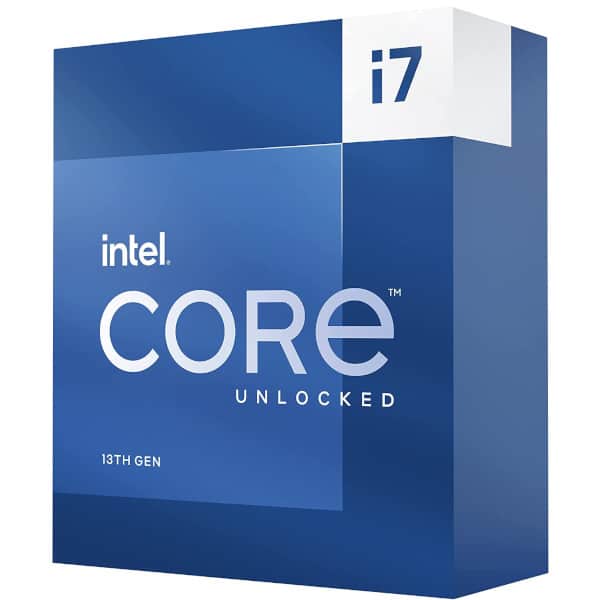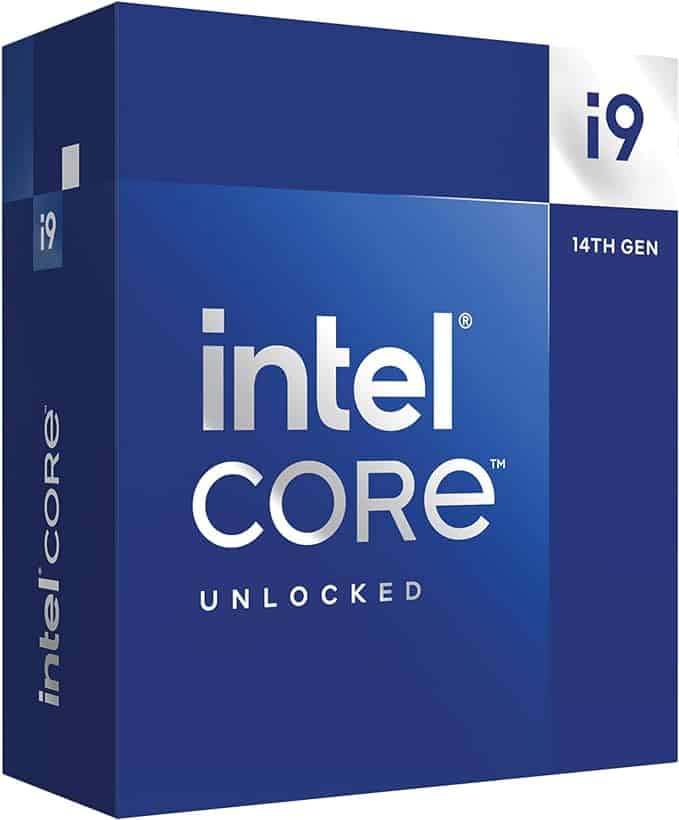AMD Ryzen 7 7800X3D review – Is it worth it?

Table of Contents
The Ryzen 7 7800X3D is the successor to the last generation’s 5800X3D, and boy has been improved. The 7000 series version was, and still is, praised for its proficiency in gaming workloads. All thanks to the cache that won’t quit – the 3D V-cache. This CPU was released back in January 2023 but became available to retailers in April. because of this chip’s age, it can often be found for less than the retail price.
This Zen 5 8-core 16-thread monster is still armed with the 3D V-Cache of the 5800X3D that came before it, but this time things are different, improvements have been made, and limitations quashed – almost. The cache inside this chip remains very dangerous for AMD’s competitors, with each advancement bringing AMD closer to dominating the gaming performance space.
Prime Day may have closed its doors, but that hasn't stopped great deals from landing on the web's biggest online retailer. Here are all the best last chance savings from this year's Prime event.
- Sapphire Pulse AMD Radeon™ RX 9070 XT Was $779 Now $719
- AMD Ryzen 7 7800X3D Processor Was $449 Now $341
- Skytech King 95 Ryzen 7 9800X3D gaming PC Was $2,899 Now $2,599
- LG 77-Inch Class OLED C5 TV Was $3,696 Now $2,996
- AOC Laptop Computer 16GB RAM 512GB SSD Was $360.99 Now $306.84
- Lexar 2TB NM1090 w/HeatSink SSD Was $281.97 Now $214.98
- Apple Watch Series 10 GPS+ Smartwatch Was $499.99 Now $379.99
- AMD Ryzen 9 5950X processor Was $3199.99 Now $279.99
- Garmin vívoactive 5 Smartwatch Was $299.99 Now $190
*Prices and savings subject to change. Click through to get the current prices.

- Cores: 8
- Threads: 16
- Boost speed : up to 5 GHz
- Base speed: 4.2 GHz
- L3 Cache: 96 MB
- TDP: 120 W
- Platform: AMD (AM5)
The 7800X3D is a fantastic chip and much improved over the previous generation. This CPU will smash through any gaming workload you throw at it, and be able to handle productivity tasks much better then before, although it still is a little limited in that department.
- Fantastic gaming performance
- Affordable thanks to age
- Less limited than the previous generation
- Still limited by cache outside of gaming workloads
- No included cooler
- Upgrade to AM5 can be expensive if you don’t already have the parts.
To cut a long review short, the 7000 series CPU has improved much over the first iteration of X3D, which is exactly what we wanted. The CPU is still limited in some capacity, but much less than the last generation. We’re not quite there yet, but it’s a big step in the right direction. The AM5 X3D chip does gaming even better than ever before but still suffers outside of those workloads. If you have your heart set on AMD, and have the money to spare, this CPU would make a fantastic feature in your gaming rig, As it is one of the best CPUs available on Team Red.
Why we gave this CPU a 4.5
The 7800X3D is much improved over the previous generation, and can offer up similar performance in games than generations ahead of it. It is a trade off, but if you don’t need it to do anything but game, you won’t be disappointed.
Specifications
Before we get into the performance of the CPU, it’s important to understand the stats that the chip brings to the table, and this would be a great time to point out those improvements that we keep mentioning.

The specifications for the AMD CPU are as follows:
- Cores: 8
- Threads: 16
- Base clock speed: 3.4GHz
- Boost clock speed: 4.5GHz
- L2 Cache: 4MB
- L3 Cache: 96MB
- TDP: 105W
- Socket: AM4
As you can see, there are the standard generational improvements you’d come to expect from a 7000 series CPU, such as the doubled L2 cache from 512Kb to 1MB. But for an X3D CPU, it has a pretty high boost speed of 5GHz. That is because the Zen 5 CPUs have a secret, and that is an extra Core Complex Die (CCD).
The 5000 series version of this CPU only had 1 CCD, meaning the X3D cache installed limited the whole CPU, diminishing its performance outside of gaming. The 7000 series has 2, with the cache only installed on one. This has a couple of advantages, firstly, it only limits essentially half of the CPU, allowing the other half to operate at most standard speeds. Another advantage is the overclockability of the chip is less limited.
You also have to consider the IPC improvement of around 15% coming from moving to the smaller 5nm manufacturing process. Cache restrictions limit Athough, some of this. If you want to feel the full force of the more numerous transistors, you’ll have to grab a non-X3D CPU.
Performance

Before we jump into the numbers that this AMD CPU managed to pull, we must outline the equipment used on our test bench. As performance is directly tied to hardware. You can’t just throw this CPU in any system and have it achieve the numbers that we did. Unfortunatley.
This is what the CPU test bench consisted of:
| Component | Name |
|---|---|
| GPU | RTX 4070 Ti Super |
| Memory | Corsair Vengeance DDR5 @ 6400MHz |
| Motherboard | ASUS ROG Corsshare Extreme X670 |
| CPU cooler | Corsair H150i ELITE LCD XT |
| Power supply | ASUS ROG Thor 1000W |
| Case | Cooler Master Masterframe |
As you can see, we spared no expense when selecting the components for our test bench. We try to keep the component selection as similar as possible, even across manufacturers and generations. This helps us to keep an even playing field for each CPU we test.
Synthetic testing
We benchmark all of our CPUs in our comprehensive testing suite that tests anything from file compression to rendering, to photo editing. This helps us cast a wide net with CPU usage and testing. Here’s how the Ryzen 7 did:
| Benchmark | Score |
|---|---|
| CPU Z Single | 643 points |
| CPU Z Multi | 7,085 points |
| Cinebench R23 Single | 1,665 points |
| Cinebench R23 Multi | 17,581 points |
| Geekbench Single | 2,624 points |
| Geekbench Multi | 15,066 points |
| Puget Systems photoshop | 8,446 points |
| Blender render | Monster 120.93 SPM Junkshop 82.04 SPM Classroom 60.64 SPM |
| 7 Zip Compression 32MB (10 passes) | 47.36s |
| Handbrake TOS 4K Fast 1080P encode | Average Speed 80.52FPS Encode Time 03:41 |
Since we have a direct comparison with the 5800X3D available, and we’ve referred to it much in this review, we shall showcase the results side by side so we can truly understand the performance gains here.
| Benchmark | 7800X3D | 5800X3D |
|---|---|---|
| CPU Z Single | 643 points | 461 points |
| CPU Z Multi | 7,085 points | 4,889 points |
| Cinebench R23 Single | 1,665 points | 1,112 points |
| Cinebench R23 Multi | 17,581 points | 10,204 points |
| Geekbench Single | 2,624 points | 1,655 points |
| Geekbench Multi | 15,066 points | 8,671 points |
| Puget Systems photoshop | 8,446 points | 5,950 points |
| Blender render | Monster 120.93 SPM Junkshop 82.04 SPM Classroom 60.64 SPM | Monster 74.58 SPM Junkshop 52.24 SPM Classroom 36.98 SPM |
| 7 Zip Compression 32MB (10 passes) | 47.36s | 69.8s |
| Handbrake TOS 4K Fast 1080P encode | Average Speed 80.52FPS Encode Time 03:41 | Average Speed 52.15 FPS Encode Time 05:40 |
As you can see, there is a huge difference between the two CPUs. The 7000 series is almost unrecognizable on paper and you wouldn’t think it contained a limiting cache at all. Thanks to advancements in the manufacturing process and CCD increases, the 7000 series can achieve just under double the score of the 5000 in most multi-core scenarios. Despite having the same number of cores and threads available. It is also true that the 7800X3D has a slight advantage in core speed, which contributes to greater performance.
The performance of this CPU is phenomenal compared to the last generation. But does that mean you should be picking this chip up for multi-core workloads? Maybe not. If we look at the single-core performance of this processor compared to the 7900X, which supposedly has the same CPU cores, just a slight increase in core speed, we can see that the 7900X wipes the floor with this chip. In Cinebench, CPU Z, and Geekbench, we observed the 7900X score higher. Sometimes by a very high margin. The point of the X3D CPU, like the 5800X3D that came before it, is to be a gaming CPU.
AMD has made efforts to reduce the performance impact that the 3D V-cache had on the chip, but it’s not quite there yet in terms of minimal impact. If you don’t plan on doing much in the way of productivity and workstation tasks, this processor could still be a good choice. If you want to compare this CPU against yours, you can probably find it listed in the Cinebench and Geekbench databases.
If you want to know more about our testing process, you can visit our PCGuide labs page, which will tell you everything you need to know about how we test our CPUs.
What do these benchmarks mean?

These benchmarks are divided into synthetic and real-world tests. The synthetic tests are a wide array of benchmarks that test the CPUs ability to complete workstation tasks, these are anything from photo editing to video encoding. It’s important we cast a wide net as people use their hardware in different ways. Although this is primarily a gaming CPU, it’s important to see how well it does in non-gaming workloads.
Real-world benchmarks test the CPUs ability to process on the fly, the tests are not scripted like synthetic benchmarks, and therefore harder to control. They are still important tests to run as they represent a wider workload than synthetic tests can alone. Pooling this data gives an example of how the processor performs overall.
In short, if the chip excels in synthetic loads, then it is a great workhorse for productivity tasks. If it does well in gaming, then it’d be great for, well, gaming.
Price
The CPU was released in 2023 and back then it retailed for $449, a pretty penny. Since then, Camelcamelcamel, an Amazon price tracker, has reported an all-time low price of $320, which isn’t a bad saving. Normally, you can pick up this Chip outside of the sale season for around $350 – which is a damn site better than $449. Note that all prices were accurate at the time of writing, but are subject to change.
Alternatives to the 7800X3D
-
AMD Ryzen 9 7900X
- Cores: 12
- Threads : 24
- Boost clock speed: 5.6 GHz
- Base clock speed: 4.7 GHz
- L3 Cache: 64 MB
- TDP: 170 W
-
-
Intel Core i7-13700K
- Cores: 16
- Threads: 24
- Platform: Raptor Lake-S
- Base Clock Speed: 100 MHz
- Boost Clock Speed: 5.4 GHz
- L3 Cache: 30 MB (shared)
-
Intel Core i9-14900K
- Cores: 24 (8P-16E)
- Threads: 32
- Boost clock speed : P-Core 5.8GHz / E-Core 4.4GHz
- Base clock speed: P-Core 3.2GHz / E-Core 2.4GHz
- L3 Cache: 36 MB
- TDP: 253W
If you’re looking for something with a little more power for workstation applications, you might be better off with the 7900X or even the standard 7800X. But of course, what these CPUs make up for in multi-core performance, it loses in gaming performance. If you’re looking for something on Team Blue’s side of the market, then you could opt for the 13700k if you want to save a little money. or the 14900K if you have some to spare.
Is X3D good on the 7000 series?
Yes, to put the answer bluntly. Although the X3D technology was by no means a gimmick on the 5000 series, the performance it brings on the 7000 series makes it seem like it. The extra CCD popped out to save the day on the 7000 series chip because there probably wasn’t a place in the market for a limited 7000 series CPU, what with Intel being as competitive as it is.

With the power of the 3D V-cache, this Ryzen 7 can punch way above its weight class in terms of gaming performance, and in the end, that’s what X3D was designed to do. Let the 7950Xs and the 7900s in the lineup handle the multi-core workloads, the X3D is here to have some good old single-core fun.
Conclusion

- Cores: 8
- Threads: 16
- Boost speed : up to 5 GHz
- Base speed: 4.2 GHz
- L3 Cache: 96 MB
- TDP: 120 W
- Platform: AMD (AM5)
The 7800X3D is a fantastic CPU in terms of gaming performance, but it’s still not quite there in terms of multi-core performance. The improvements gained thanks to the extra CCD are enough to make the CPU somewhat more valuable as a do-it-all chip, but we’d recommend you stay away if you plan on doing much more than gaming.
On the contrary, if you want a processor that is capable of smashing through any game you throw at it, this is the CPU for you. It’s reasonably priced and can be found for less on a sale, and in terms of longevity, it will be a long time before a game appears that this chip can’t handle.










